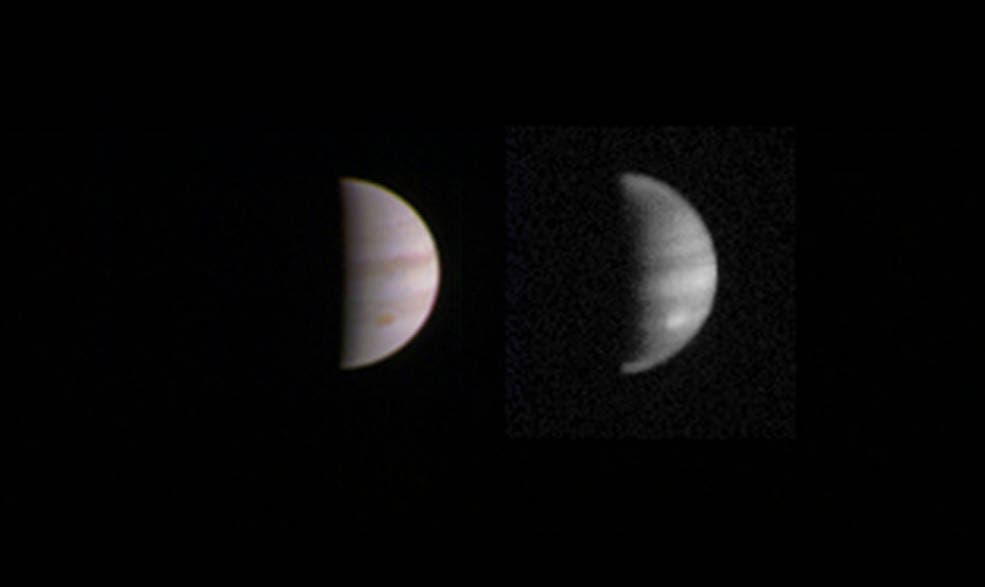NASA’s Juno shuttle will get closer to Jupiter than any other man-made structure.
“This is our first opportunity to really take a close-up look at the king of our solar system and begin to figure out how he works,” the mission’s principle investigator said.

Credits: NASA/JPL-Caltech/SwRI/MSSS
At the time of the approach, Juno will be about 2,600 miles (4,200 kilometers) above Jupiter’s swirling clouds, traveling at 130,000 mph (208,000 kilometers per hour) relative to Jupiter.
So far, everything is going according to plan – Juno’s instruments all seem to be working properly, and the shuttle’s camera (JunoCam) will take several snapshots of the gas giant. Some high-resolution photos of Jupiter are expected to come next week.
“This is the first time we will be close to Jupiter since we entered orbit on July 4,” said Scott Bolton, principal investigator of Juno from the Southwest Research Institute in San Antonio. “Back then we turned all our instruments off to focus on the rocket burn to get Juno into orbit around Jupiter. Since then, we have checked Juno from stem to stern and back again. We still have more testing to do, but we are confident that everything is working great, so for this upcoming flyby Juno’s eyes and ears, our science instruments, will all be open.”
However, because of the immense importance of the mission, astronomers want to make sure they get everything right before they start releasing information, so it may take a while before we get to see what Juno sees.
“No other spacecraft has ever orbited Jupiter this closely, or over the poles in this fashion,” said Steve Levin, Juno project scientist from NASA’s Jet Propulsion Laboratory in Pasadena, California. “This is our first opportunity and there are bound to be surprises. We need to take our time to make sure our conclusions are correct.”
The Juno shuttle was launched in 2011, and it reached Jupiter’s atmosphere on the 5th of July, 2016. Juno has stabilized itself in a polar orbit, the best position to study Jupiter’s composition, gravity field, magnetic field, and polar magnetosphere. Juno will also search for clues about how the planet formed, including whether it has a rocky core, the amount of water present within the deep atmosphere, mass distribution, and its deep winds, which can reach speeds of 618 kilometers per hour (384 mph). A significant innovation brought by the Juno mission is that unlike its predecessors (which used nuclear power to fly), Juno relies only on solar panels to power itself.


